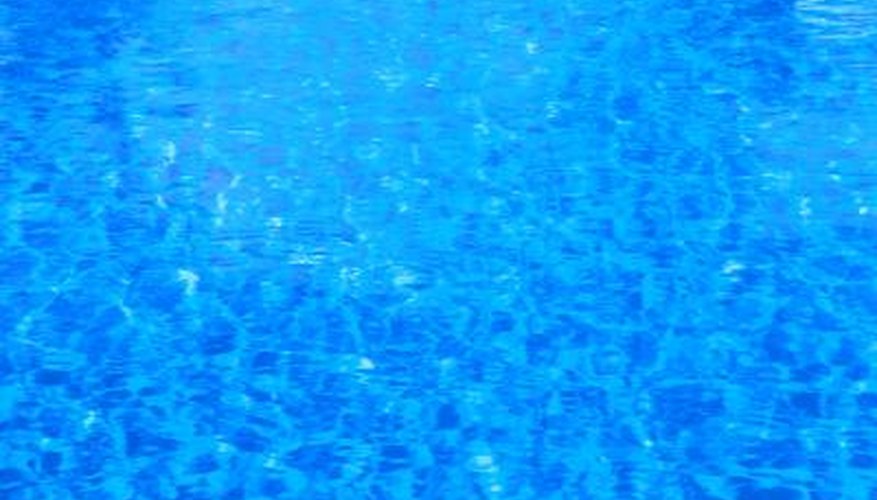Swimming pools hold large volumes of water that need treatment for safety. After a few years of continuous addition of chemicals, certain elements begin to build up and make the water difficult or impossible to balance. With proper pool maintenance, the same water can remain in the pool for years. The exact amount of time depends on your pool maintenance, the condition of the water in your area and the pool's surroundings.
TDS
Total dissolved solids (TDS) is the amount of all the soluble substances dissolved into the water. These substances include mineral, salts and metals measured in parts per million (ppm). When the total dissolved solids exceed the 1,500 ppm level, it takes twice the chemicals to balance the water, and nothing acts properly. High TDS results in corrosion of pool equipment, cloudy water, eye and skin irritation, and algae growth, even when the chemicals are in line.
- Total dissolved solids (TDS) is the amount of all the soluble substances dissolved into the water.
How TDS Rises
Since the total dissolved solids is a measure of everything in the water that is not water, levels are constantly rising with everything added to the pool. When water evaporates, only the pure H2O evaporates, leaving the solids behind. Fill water that is high in minerals, such as well water, can lead to higher TDS levels quicker than city or county water. Adding water to replace what evaporates, every chemical used to balance the water and swimming waste all add to the TDS level of the pool.
- Since the total dissolved solids is a measure of everything in the water that is not water, levels are constantly rising with everything added to the pool.
- Adding water to replace what evaporates, every chemical used to balance the water and swimming waste all add to the TDS level of the pool.
Testing for TDS
Testing the water for TDS involves taking a sample to the pool store and having it check. There are some hand-held meters available for home use that test the conductivity of the water with an electrical charge. As the TDS level rises, the conductivity will rise with it. If the levels are just over the 1,500 ppm mark, drain a few feet and refill with fresh water. This will reduce the TDS level and allow the chemicals to work better, but they will need reapplication about once a season. On average, depending on your chosen chemical treatment and maintenance plan, pool water can remain in the pool for three to five years with no problems.
- Testing the water for TDS involves taking a sample to the pool store and having it check.
Removing TDS
The only way to remove these dissolved solids is to change the water in steps by draining and refilling, running the pump to circulate the fresh water into the rest of the pool. Repeat this process until the levels fall low enough. The other way to remove the solids is to drain the pool completely. Depending on the type of pool, draining can be dangerous. Never drain in-ground, vinyl-lined pools and above-ground metal wall pools, as the walls can collapse and the liner could shrink. Check with the installer of your pool for the best way to remove TDS from the water.
- The only way to remove these dissolved solids is to change the water in steps by draining and refilling, running the pump to circulate the fresh water into the rest of the pool.
- The other way to remove the solids is to drain the pool completely.
